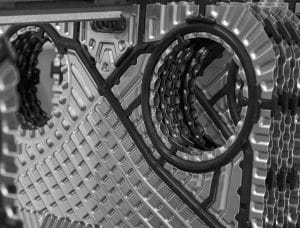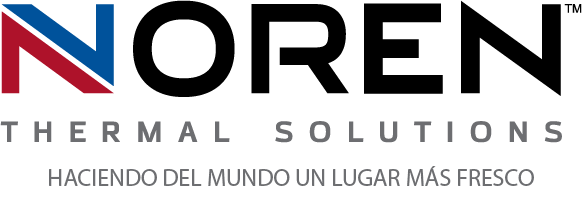 Choosing heat exchangers for most common electrical cooling needs has become common practice for companies in a wide range of industries. In most cases, basic heat exchanger designs help companies significantly lower overhead costs related to electrical cooling, including energy and maintenance expenditures. However, electrical thermal management needs have evolved significantly over the decades, and heat exchanger designs have evolved right along with them to meet increasingly more advanced electrical cooling needs. Given their ability to easily adapt to most thermal management needs, choosing the right heat exchanger for any given application may often be easier than expected.
Choosing heat exchangers for most common electrical cooling needs has become common practice for companies in a wide range of industries. In most cases, basic heat exchanger designs help companies significantly lower overhead costs related to electrical cooling, including energy and maintenance expenditures. However, electrical thermal management needs have evolved significantly over the decades, and heat exchanger designs have evolved right along with them to meet increasingly more advanced electrical cooling needs. Given their ability to easily adapt to most thermal management needs, choosing the right heat exchanger for any given application may often be easier than expected.
Comprehensively analyze the application’s design
The first step to choosing the right heat exchanger for an application that’s already designed is to thoroughly analyze that design from multiple angles. That includes incorporating expertise from several different areas, including thermal management, electrical engineering, design and manufacturing, and more. Not only should the heat exchanger meet the application’s unique operating parameters, but also fit comfortably into the physical space allocated for it and offer optimal cooling efficiency within that space. The results of this analysis will help determine what type of heat exchanger and cooling methods would best fit the application’s needs.
Measure the advantages of ambient cooling
For many applications, companies are often surprised to learn that ambient cooling is more than enough to meet the system’s cooling needs. Ambient cooling is the process of keeping the temperature within an electrical enclosure at just above the ambient temperature outside of it. It can be accomplished with highly efficient and eco-friendly methods, such as using a cooling fluid to continuously absorb and transfer electrical waste heat. Switching from traditional methods like air conditioning or air compression units to more natural ambient cooling can create significant savings in both energy, maintenance, and overall operations.
Consider consolidating thermal management needs
After implementing the right heat exchangers for their applications, companies almost immediately notice the benefits and reduced costs of more streamlined electrical cooling. However, during the system’s design phase, companies should also consider other areas where thermal management can be streamlined and whether the right heat exchanger can help facilitate that, as well. For example, many companies these days utilize in-house wastewater treatment processes, which require the consistent application of heat. If applicable, heat exchangers can be designed to transfer the electrical waste heat they collect to other operations, such as wastewater treatment, to repurpose it.
For more information about how to choose the right heat exchanger for any application, call Noren Thermal Solutions in Taylor, TX, at 866-936-6736.







